- Abstraction in Java
- Clojure Tutorial
- Control Statements in Java
- Core Java Interview Questions
- Data Types in java
- Top 9 Java EE Frameworks
- Java EE vs Spring Framework
- Java Frameworks List - Top 14 Java Frameworks
- Java Interview Questions
- Java Tutorial
- Java Web Dynpro Interview Questions
- JavaFX Interview Questions
- Method Overloading in Java
- Multithreading in Java
- List of Popular Open Source Java Build tools
- Operators in Java
- Program Logics in Java
- String Handling in Java
- Why You Should Learn Java Programming
- Data Structures Interview Questions
- Exception Handling in Java
- Multithreading Interview Questions
- Design Patterns Interview Questions and Answers
- C++ Interview Questions and Answers
- JSP Interview Questions
- EJB Interview Questions
- SOAP in Web Services
- JPA Interview Questions
- DXC Interview Questions and Answers
- Java Architect Interview Questions
- Java Concurrency Interview Questions
- What is Java Concurrency?
- What is JPA - Complete Tutorial Guide
- What is EJB?
- Java Collections Interview Questions
- Java Swing Tutorial
- Java Stream Tutorial
- Linked List Interview Questions
- Compiler Design Interview Questions
- Java Collection Tutorial
- Java Stream Interview Questions
- Thymeleaf vs JSP
- Thymeleaf Tutorial - What is Thymeleaf
- Socket Programming in Java - What is TCP
- Capgemini Interview Questions
- Zoho Interview Questions
- PwC Interview Questions
- Hexaware Interview Questions
- Intuit Interview Questions
- Tech Mahindra Interview Questions
- Qualcomm Interview Questions
- Arcesium Interview Questions
- PayTM Interview Questions
- DXC Technology Interview Questions
- Java Developer Job Description
- MAQ Software Interview Questions
- Amdocs Interview Questions
- TCS NQT Interview Questions
- Virtusa Interview Questions
- Siemens Interview Questions
- Tricky Java Interview Questions
Apache Tomcat is an open-source software released by the Apache software foundation. It is also a web server widely used by java applications. With Apache Tomcat, we can run java applications on host machines seamlessly. The significant thing about Apache Tomcat is that it powers many mission-critical web applications across many organizations.
Mindmajix content expert team has compiled the top 40 Apache Tomcat interview questions and answers. These Apache Tomcat interview questions cover a wide array of topics on the subject. Once you have done reading the questions and answers, you will gain a solid knowledge of Apache Tomcat and walk to your interview with courage.
Importantly, Mindmajix offers questions and answers for different types of learners. So, based on your priority, you can directly jump into the right section and learn them. The different sections are given as follows
Top 10 Apache Tomcat Frequently Asked Questions
- What are the Components of Tomcat Architecture?
- What is the use of Tomcat Valve?
- What do you understand by AJP Connector?
- What is the structure of the Tomcat Directory?
- What is Tomcat Coyote?
- What do you mean by Jasper?
- What are the Services offered by Apache Tomcat?
- How would you change the default port in Apache Tomcat?
- How would you clear the Tomcat Cache within Windows?
- What are the security options available in Apache Tomcat?
Apache Tomcat Interview Questions For Beginners
1. What is Apache Tomcat?
Apache server is an open-source web server invented by the Apache software foundation. It is also the java servlet system and JSP container widely used by Java developers. Apache Tomcat works based on the HTTP protocol. It allows users to connect easily with Tomcat using a link.
| If you want to enrich your career and become a professional in Apache Tomcat, then enroll in "Core Java Training" - This course will help you to achieve excellence in this domain. |
2. What is TomEE?
It is the Java enterprise edition of Apache Tomcat. It is the Jakarta EE 9.1 certified application server. Not only that, it is a compatible implementation of the Java EE6 web profile. Simply put, TomEE is the combination of Tomcat and Jakarta EE. It provides support for servlets and JSP.
3. What are the Components of Tomcat Architecture?
The server, engine, service, connector, host, and context are the core components of tomcat architecture. The server is nothing but a whole container. Service exists inside a server. It connects many connectors together as an engine. The engine is a request processing pipeline. An engine can have many hosts. A connector manages communication with clients. Context is nothing but a web application.
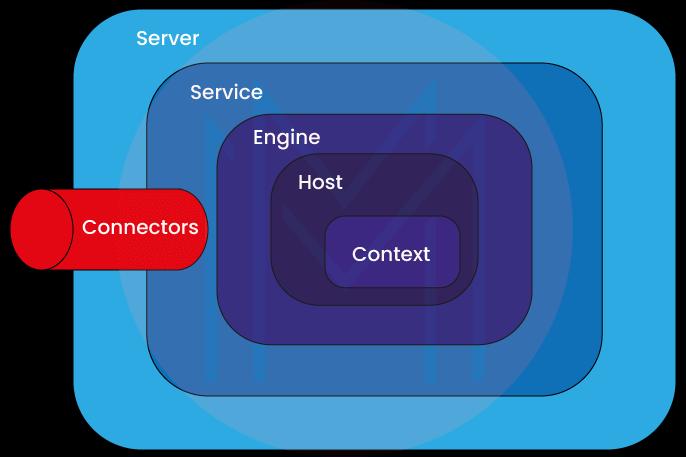
4. How can you start and stop Apache Tomcat?
We can start and stop Apache Tomcat using batch files. In this regard, we use the batch files such as startup.bat and shutdown.bat to start and stop Apache Tomcat, respectively.
5. What is the use of Tomcat Valve?
We can link a java instance class with a Catalina container with the help of the tomcat valve.
6. What do you mean by Default Session Timeout?
Session Timeout is one of the configuration settings specified in web.xml. It is the time duration that the server will wait for when there is an idle session. It is essential to note that no process will happen inside the server during this idle time.
7. What are the different directories of Apache Tomcat?
- /bin – It holds start-up, as well as shut-down, and other scripts
- /logs – It contains log files
- /conf – It contains configuration files as well as other DTDs
- /webapps – It holds webapps.
8. What do you understand by AJP Connector?
AJP Connector supports load balancing. It denotes a connector component used to communicate with a web connector through an AJP protocol. Not only that, we can use this connector to integrate Tomcat with an apache installation and manage the static content used in a web application.
9. What is the name of the Crucial Configuration files in Apache Tomcat?
The Crucial Configuration file is known as httpd.conf.
10. What is the role of listening in Apache Tomcat?
If we want Tomcat to consider a specific IP, we need to mention the IP, and PORT in the listen drive. It is essential to note that we use listen only when developers use multiple IPs.
11. What different checks or log extents do Apache Tomcat offer?
The following are the checks offered by Apache Tomcat.
- Info
- Warn
- Debug
- Notice
- Alarm
- Error
- Crit
- Emerg
12. What is the structure of the Tomcat Directory?
The typical Tomcat directory hierarchy consists of the following
- Bin
- Conf
- Common
- Logs
- Server
- Webapps
- Shared
- Work
13. What is the main log File created by Apache Tomcat?
Catalina.out is the main log file created by Apache Tomcat. It is the file used to find error messages. In some cases, you need root account privileges to view log files.
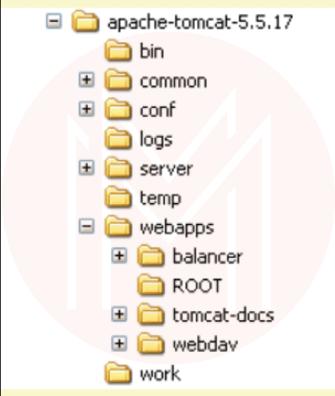
14. What are the Pros and Cons of Apache Tomcat?
Pros
- Tomcat deployment is easy
- It easily integrates with Kubernetes and Jenkins
- It is an open-source, lightweight, and scalable software
- Built-in security
Cons
- Debugging is not good
- Memory leaks
- The user interface is not good.
Intermediate Apache Tomcat Interview Questions
15. Can you list out the different connectors used in Apache Tomcat?
- HTTP Connectors: They help access functions such as redirects as well as proxy forwarding.
- AJP Connectors: They use AJP protocol instead of HTTP. And they are implemented through the plugin technology of Tomcat.
16. What is Tomcat Coyote?
Tomcat Coyote is an HTTP connector that sends and receives web requests to the Tomcat engine. It listens to a TCP/IP port and interacts with the requesting client.
17. Can you mention the different Catalina configuration files?
Catalina’s configuration files are given as follows
- Policy
- XML
- Properties
- Tomcat-users.xml
18. What do you mean by Jasper?
Jasper is nothing but Apache Tomcat’s JSP engine. During execution, Jasper automatically tracks changes in JSP files and recompiles them.
19. What are the contents of the Tomcat-users.xml file?
This file contains a list of roles, user names, and passwords. In a way, it is a simple file with the root element as tomcat-users, whereas the child elements are role and user. Know that each role has one attribute named 'role name’ and each user has three attributes such as ‘password’, ‘name’, and ‘roles’.
20. What do you mean by Tomcat availability?
Tomcat offers high uptime at the same time, prevents faults in the system. For example, if one of the servers fails to function in the tomcat cluster, another server will start functioning immediately. In other words, users will receive uninterrupted services from the tomcat servers.
21. What do you understand by the context of Apache Tomcat?
Context represents a web application, and it runs within a virtual host. Web applications are used to process HTTPS requests. Also, every web application is based on a web application archive (WAR) file.
22. What do you understand by Tomcat Cluster?
A Tomcat Cluster is a collection of multiple servers that work together as a single system. We use load balancers to connect the servers together by using the server’s network port and IP address. It is essential to note that every node in a tomcat cluster shares session data with other nodes in the cluster by data replication.
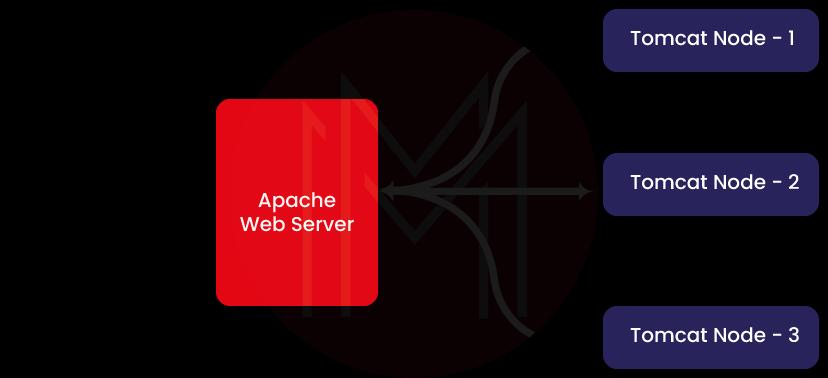
23. Why do you use SSL with Apache Tomcat?
We use SSL with Tomcat when we need to handle connections. Importantly, Tomcat must be running as a stand-alone web server when we use SSL with Tomcat.
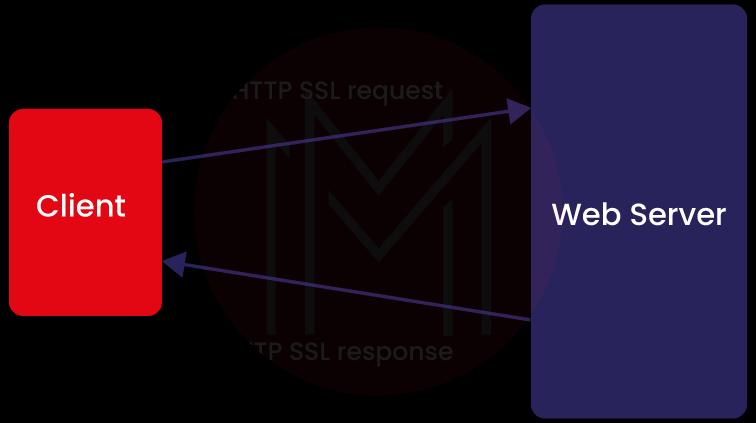
24. What do you mean by Tomcat Valve?
It is used to connect a java instance of a java class with a Catalina container.

25. What are the Services offered by Apache Tomcat?
- Installing services
- Updating services
- Removing services
- Debugging services
26. Where are log files created in Apache Tomcat, and which is the main log file?
Apache Tomcat creates log files in the /opt/bitnami/tomcat/logs directory. The main log file is catalina.out. You can find error messages in this file.
Advanced Apache Tomcat Interview Questions
27. How does Apache Tomcat work with NTLM and IIS?
We must follow the standard instructions to use integrated windows security. Also, you must disable tomcat authentication in the server.xml.
28. How can we use . and [ ] operators in Apache Tomcat?
We can use both operators interchangeably. However, it would be better if we use. operator while executing a bean property. Similarly, we can use the [ ] operator while running a map value. Not only that, we can use the use [ ] operator while executing an array index.
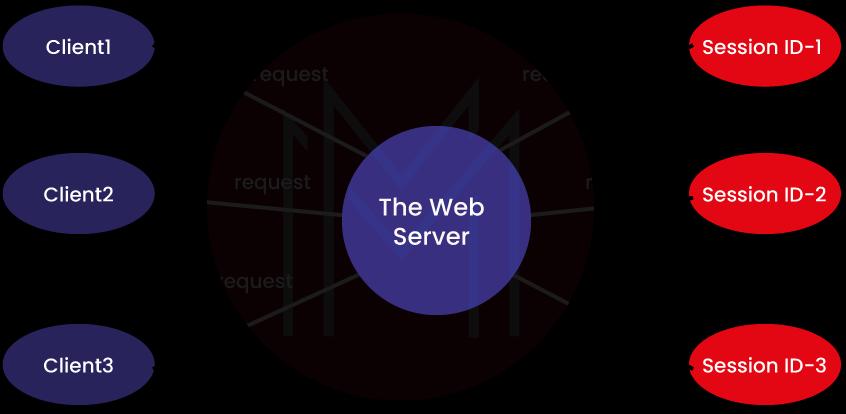
29. How would you change the default port in Apache Tomcat?
- First, stop the Apache Tomcat service
- Then, go to the Apache Tomcat folder
- Now change the port value from 8080 to the number you want to assign the server.
- Save the changes
- Finally, you can restart the Apache Tomcat service.
30. What would be the output of select* from the tab?
The output will display default database tables.
31. What are the different configuration valves of Apache Tomcat?
Tomcat has four different configuration valves as follows
- Access log
- Remote host filter
- Remote address filter
- Request dumper
32. What methods can you use to install Apache Tomcat?
You can install Apache Tomcat in the following two methods:
- By using the windows service installer
- By using a zip archive
33. What are the advantages of running Apache Tomcat as a service?
- Apache Tomcat windows service starts automatically, supporting starting remote systems.
- It allows running from a special account that is secured from other accounts.
- It doesn’t matter whether there is an active user or not, you can start Apache Tomcat at any time.
34. How would you change the default home page in Tomcat?
- Go to the installation directory of Apache Tomcat in the ‘my computer’ of your system.
- Double-click the “httpd.conf” file in the “conf” directory.
- Now, open the httpd.conf with notepad and identify the following line in the configuration file. DirectoryIndex index.html index.jsp index.php’
- Finally, modify the DirectoryIndex line with the custom page.
35. How would you clear the Tomcat Cache within Windows?
- First, open the central configuration manager and stop Tomcat
- Now, go to the tomcat default tomcat cache directory
- Then, you can rename the localhost directory as localhost_old.
- Restart tomcat
- Finally, you can launch the CMC or BI Launch Pad from the browser.
36. Why is Apache Tomcat considered a web server instead of an Application Server?
Apache server is used as the web server since it works as a web server and servlet container. Also, it doesn't provide the complete feature set of Java EE.
37. How can we create virtual hosts in Apache Tomcat?
- First, edit the server.xml file in the text editor. We can find this file in the conf directory.
- At the end of this file, we can see the default virtual host configuration
- Now, we can create the first virtual host for a domain
- We can make the second virtual host for a sub-domain
- Finally, we can save the changes and close the file.
38. What are the security options available in Apache Tomcat?
Tomcat offers many security headers, such as X-Frame options, X-Content-Type options, X-XSS-Protection, and HSTS.
- X-Frame options are used to prevent a clickjacking attack
- X-XSS protection is used to avoid cross-site scripting attack
- X-content type options are used to control content type sniffing
- HSTS is used to strengthen transport security.
39. How would you prevent memory leaks in Tomcat?
We can prevent memory leaks by unregistering the drivers associated with the web application when we uninstall the application. Otherwise, memory leaks in tomcat will continue until we shut down the web server.
40. How does Apache Tomcat perform session tracking?
Tomcat creates a session ID once the client enables a request to the server. Then, this session ID is named JSESSIONID and inserted into a cookie. When the server responds to the client request, the session id also is sent along with that.
Most Commonly Asked Apache Tomcat FAQs
1. What is Apache Tomcat used for?
Apache Tomcat can be used as a java API as well as a Java web service interface. Java developers widely use it for building and maintaining websites. We can run java applications as well as server-based systems on host machines using Apache Tomcat. Additionally, we can run JSP and Servlets using Apache Tomcat.
2. What are the Three Components of Apache Tomcat?
Catalina, Jasper, and Coyote are the three core components of Apache Tomcat.
3. What is an Apache Tomcat Server?
It is a web container where you can run servlet and JAVA server pages. It can also be used as an HTTP server. It can be used for hosting java based code. Also, it can manage both static and dynamic pages.
4. What is the difference between Tomcat and Apache?
Tomcat Server handles dynamic content with the help of java-based logic. On the other side, the Apache HTTP server handles static content such as HTML, audio, images, and text.
5. Can Tomcat run without Apache?
Yes, we can run Tomcat without an apache server since Tomcat has its own web server.
6. What is the default port number for Tomcat?
The default port number of Apache Tomcat is 8080. It means that Tomcat must run http://localhost:8080. We can ensure this in our local machine after initializing Tomcat.
7. Is Tomcat a TCP or UDP?
Tomcat is a TCP. This is because Tomcat is a web server that works with the HTTPS protocol. And this protocol is TCP based, essentially.
8. What are the ports of Apache Tomcat?
There are three ports in Tomcat such as 8005, 8080, and 8009.
Apache Tomcat Interview Tips
Be an early bird: Always aim to be early to your interviews at least 15 minutes earlier – no matter whether it is an online interview or offline interview. This 15 mins breathing time will help you recollect the subject you have prepared. Mainly, you will attend your interview calmly and relaxed.
1. Speak Appropriate: You need to answer only with the relevant answers. You need to brief your answers when interviewers expect simple answers. Similarly, you shouldn't give short answers when they wish for detailed explanations.
2. Understand Thoroughly: while preparing for your interview, you must thoroughly learn all the subject concepts. If you have any doubts, refer to related content in other blogs, refer to books, ask your friends, mentors, etc. one crucial thing is, please never attend interviews with half-baked knowledge.
3. Test Yourself: Before attending an interview, test yourself by attending mock interviews, practicing quizzes, and interacting with subject experts or seniors. It will help you locate where you are right now regarding your preparation. Also, you can identify your areas for improvement and rectify them.
4. Do not underestimate or overestimate: You shouldn’t underestimate that your interviewers may ask simple questions. At the same time, you do not fear that they may ask complicated questions. Balance your thoughts in such a way that you will face any questions with your good preparation.
Conclusion
On a final note, we are sure that all these 40 Apache Tomcat Interview Questions and answers might have helped you to sharpen your knowledge and boost your confidence. Now, you will definitely be way ahead of your competitors in the Interview. Know that there are plenty of opportunities across various organizations for candidates familiar with Java tools. So, if you complete a Java course, you can get placed in a good organization as soon as possible. Well, Mindmajix offers many Java courses. You can best use these courses to ace your Interviews successfully.
 On-Job Support Service
On-Job Support Service
Online Work Support for your on-job roles.

Our work-support plans provide precise options as per your project tasks. Whether you are a newbie or an experienced professional seeking assistance in completing project tasks, we are here with the following plans to meet your custom needs:
- Pay Per Hour
- Pay Per Week
- Monthly
| Name | Dates | |
|---|---|---|
| Core Java Training | Jan 06 to Jan 21 | View Details |
| Core Java Training | Jan 10 to Jan 25 | View Details |
| Core Java Training | Jan 13 to Jan 28 | View Details |
| Core Java Training | Jan 17 to Feb 01 | View Details |

Madhuri is a Senior Content Creator at MindMajix. She has written about a range of different topics on various technologies, which include, Splunk, Tensorflow, Selenium, and CEH. She spends most of her time researching on technology, and startups. Connect with her via LinkedIn and Twitter .
















